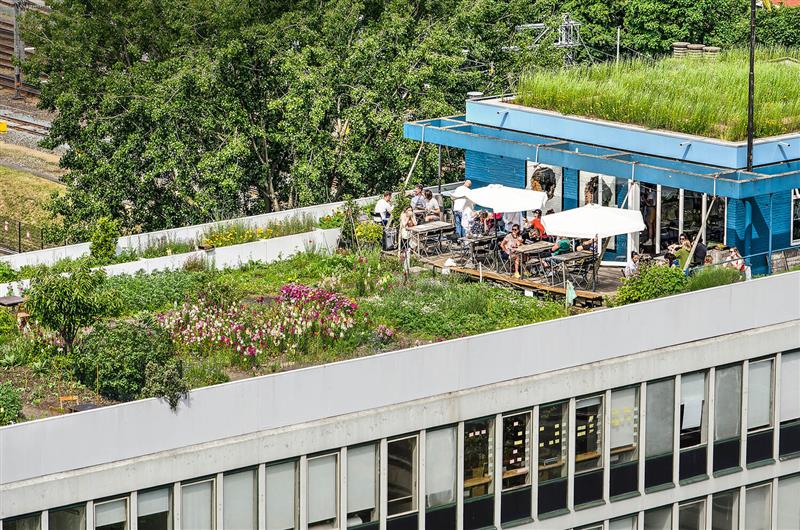
Rotterdam, The Netherlands: section of the Dakakker. ID:1415339051
By interweaving green infrastructure with the built environment, we can tackle some of the effects of human-induced warming locally, writes Luigi Petito, Head of WGIN EU Chapter, in the Autumn edition of Living Architecture Monitor
This summer’s extreme weather conditions battered most of Europe. In the North of the continent heavy precipitations devastated large part of Belgium and Germany. This had a dramatic human impact. In the South, wildfires ravaged large areas in Spain, Italy and Greece. Sadly, these events were not limited to Europe: extreme weather was a phenomenon witnessed by communities across the globe, showing that even some of the world’s richest countries remain unprepared for the intensifying consequences of climate change.
The Sixth Assessment Report of the United Nations Intergovernmental Panel on Climate Change reminded us that unless significant reductions in CO2 and other greenhouse gas emissions occur in the coming decades, the global temperature will increase above 1.5 °C and the consequences for the health of planet Earth and for humanity will be dire.
Regrettably, many changes due to past and future greenhouse gas emissions are irreversible, especially changes to the ocean, ice sheets and the global sea levels. Others can be addressed with effective mitigation and adaptation actions.
In cities for example, we can reverse the trends if we renature urban areas. By interweaving green infrastructure with the built environment, we can tackle some of the effects of human-induced warming locally. At the same time, we can limit further urbanization, which, according to the IPCC report, will increase the severity of heatwaves as well as mean and heavy precipitation and resulting runoff intensity.
Living Architecture Monitor (LAM) is a quarterly publication first published in 1998. It features in-depth interviews with leaders in the green building movement, opinions, research, and green roof and wall project profiles.



